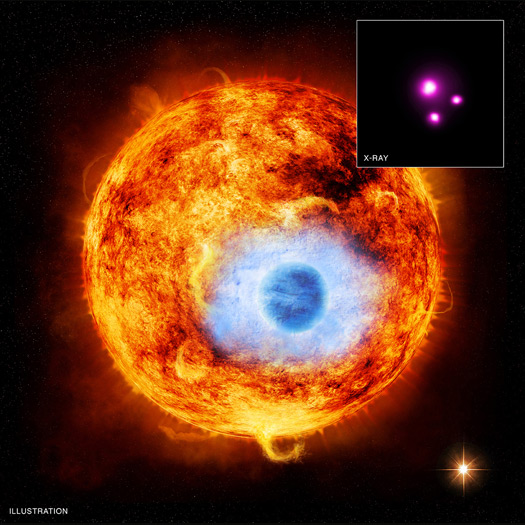

| Visitors Now: | |
| Total Visits: | |
| Total Stories: |

| Story Views | |
| Now: | |
| Last Hour: | |
| Last 24 Hours: | |
| Total: | |
“Blue” Exoplanet Now Seen in X-rays for the First Time

This graphic depicts HD 189733b, the first exoplanet caught passing in front of its parent star in X-rays. Credit: X-ray: NASA/CXC/SAO/K.Poppenhaeger et al; Illustration: NASA/CXC/M.Weiss.
In the medical field, X-rays are used for finding and diagnosing all sorts of ailments hidden inside the body; in astronomy X-rays also study obscured objects like pulsars and black holes. Now, for the first time, X-rays have been used to study another object in space that tends to be difficult to spot: an extra solar planet. The Chandra X-ray Observatory European Space Agency’s XMM Newton Observatory combined their X-ray super powers to look at an exoplanet passing in front of its parent star.
This is not a new detection of an exoplanet – this same exoplanet, named HD 189733b has been one of the most-observed planets orbiting another star, and was recently in the news for Hubble confirming the planet’s ocean-blue atmosphere and the likelihood of having glass raining down on the planet.
(…)
Read the rest of “Blue” Exoplanet Now Seen in X-rays for the First Time (523 words)
© nancy for Universe Today, 2013. |
Permalink |
No comment |
Post tags: Chandra X-ray Observatory, exoplanets, Extrasolar Planets, HD 189733b, XMM Newton Observatory
Feed enhanced by Better Feed from Ozh
Source: http://www.universetoday.com/103828/blue-exoplanet-now-seen-in-x-rays-for-the-first-time/


